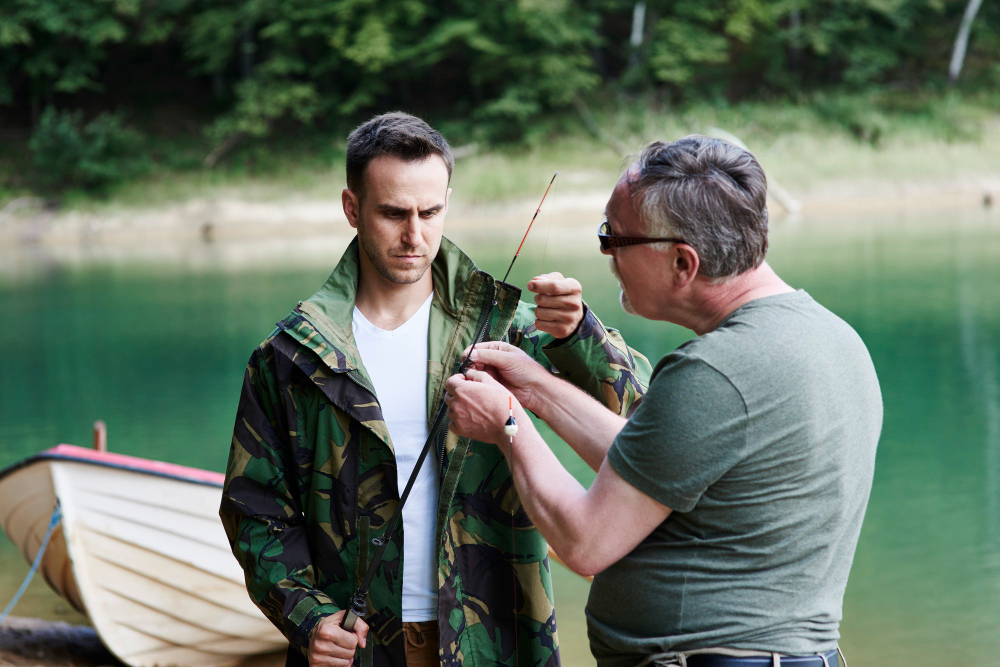Fishing has been a way of life for many people throughout history. It’s a sport that connects us to nature, provides a sense of peace and tranquility, and offers an escape from the stresses of everyday life. But as much as we love fishing, it can be frustrating at times, especially when we come up empty-handed after hours on the water. However, with the advancements in fish finder technology, we can now improve our chances of success and make fishing even more enjoyable. One such feature that has revolutionized fishing is bottom composition identification. In this article, we will explore how this game-changing feature in fish finder technology has transformed the way we fish and enhanced our overall fishing experience.
Bottom Composition Identification – What is it?
The bottom composition identification feature on fish finders is a recent technological advancement that allows anglers to see the type of bottom surface they are fishing over. It uses advanced sonar technology to create images of the bottom and identify the composition of the material beneath the water. This includes everything from rocks, gravel, sand, and mud, to other debris that may be present.
How it Works
Fish finders equipped with this feature emit sound waves that penetrate the water and bounce off the bottom surface. The returning sound waves are then recorded and analyzed by the device, which creates an image of the bottom surface. The images are color-coded to indicate the type of material that is present. For example, sand may be depicted in yellow, while rocks are shown in shades of gray or black.
Why it Matters
Knowing the type of bottom surface you are fishing over is essential for success. Different fish species prefer different types of habitat, and knowing what type of bottom they are likely to inhabit can help you target those areas more effectively. Additionally, understanding the bottom composition can help you determine the type of lure or bait to use. For example, a soft plastic worm may work well in sandy bottoms, while a jig may be more effective in rocky areas.
Fish Behavior and Bottom Composition
Fish behavior is closely tied to the type of bottom surface they inhabit. Some fish, such as catfish and carp, prefer muddy bottoms, while others, such as bass and trout, prefer rocky areas. Understanding the type of bottom surface can help you identify areas that are likely to hold fish and adjust your fishing technique accordingly. For example, if you are targeting bass, you may want to focus on areas with rocky bottoms and use a lure that mimics a crawfish or other bottom-dwelling prey.
Seasonal Changes and Bottom Composition
Bottom composition can also change with the seasons, which can impact fish behavior. For example, during the summer months, aquatic vegetation may grow in shallow areas, which can attract fish. However, as the water cools and the vegetation dies off, the fish may move to deeper areas with different types of bottom composition. Understanding how bottom composition changes with the seasons can help you stay one step ahead of the fish and increase your chances of success.
Choosing the Right Fish Finder
If you’re in the market for a fish finder with bottom composition identification, there are a few factors to consider. First, make sure the device is compatible with your boat and meets your specific needs. Consider the size of the screen and the clarity of the images. Look for a device that is easy to use and has a user-friendly interface. Additionally, make sure the device is durable and can withstand the harsh marine environment.
Using Bottom Composition Identification Effectively
To use bottom composition identification effectively, it’s important to understand the data it provides. Use the color-coded images to identify areas with the type of bottom surface that is most likely to hold the fish you are targeting. Adjust your fishing technique accordingly by selecting the appropriate lure or bait for the area you are fishing. Keep in mind that different fish species prefer different types of bottom compositions. For example, if you are targeting bass, look for areas with rocky or gravelly bottoms as they prefer those types of surfaces for spawning and feeding.
Another important factor to consider is water depth. Bottom composition identification can also help you locate the right depth where fish are holding. For example, if you are fishing for walleye, look for areas with a soft bottom in depths of 15-30 feet during the summer months. During the fall and winter months, walleye tend to move to deeper water, so look for areas with a hard bottom in depths of 30-50 feet.
It’s important to remember that bottom composition identification is not a foolproof method of locating fish. It’s merely a tool to help you increase your chances of success. Factors such as weather, water temperature, and time of day can also impact fish behavior and location.
Bottom composition identification is a game-changing feature in fish finder technology. It allows anglers to more effectively locate and target fish by providing detailed information on the type of bottom surface and depth where they are most likely to be found. By using this feature effectively, anglers can increase their chances of success and enhance their overall fishing experience.
As with any technology, it’s important to take the time to understand how it works and how to use it effectively. While bottom composition identification can provide valuable information, it should be used in conjunction with other tools such as water temperature gauges and sonar imaging to get a complete picture of the underwater environment.
So next time you’re out on the water, don’t forget to take advantage of this amazing feature and use it to your advantage. With bottom composition identification, you can take your fishing game to the next level and create unforgettable memories on the water. If you’re in the market for a fish finder with this feature, check out best fish finder hunters for a variety of options that will suit your needs and budget. Happy fishing!





